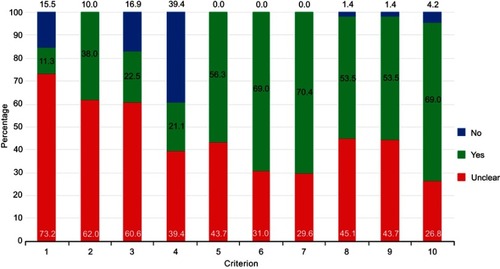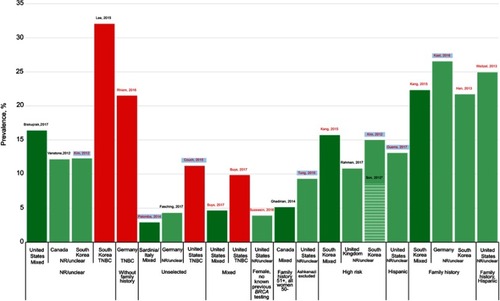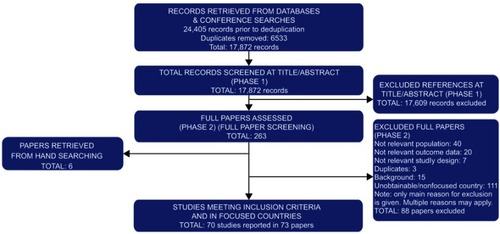Figures & data
Figure 2 Summary of JBI risk of bias assessment for prevalence studies.

Table 1 Summary of key study characteristics
Figure 3 Prevalence (%) in largest (N>500) studies.
Abbreviations: BC, breast cancer; NR, not reported; TNBC, triple-negative breast cancer.

Table 2 Germline BRCA mutation prevalence in those unselected for family history, age, sex, or ethnicity
Table 3 BRCA mutation prevalence in advanced breast cancer

